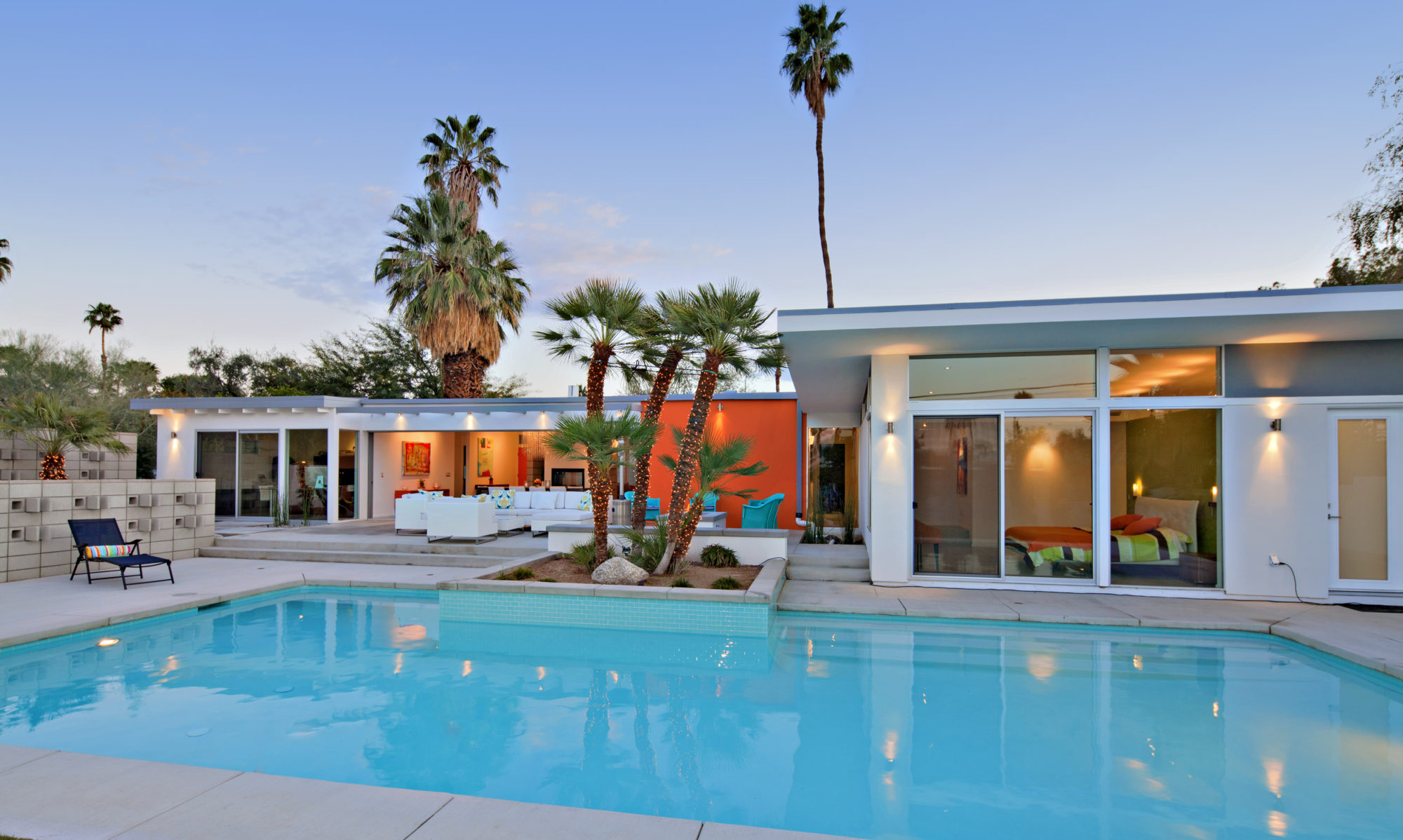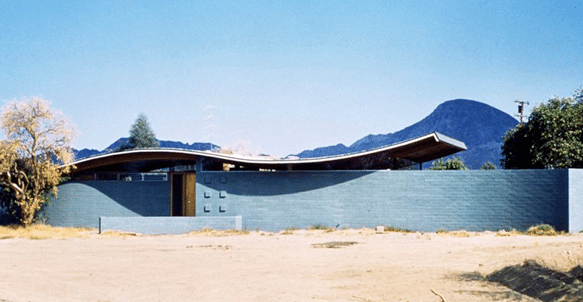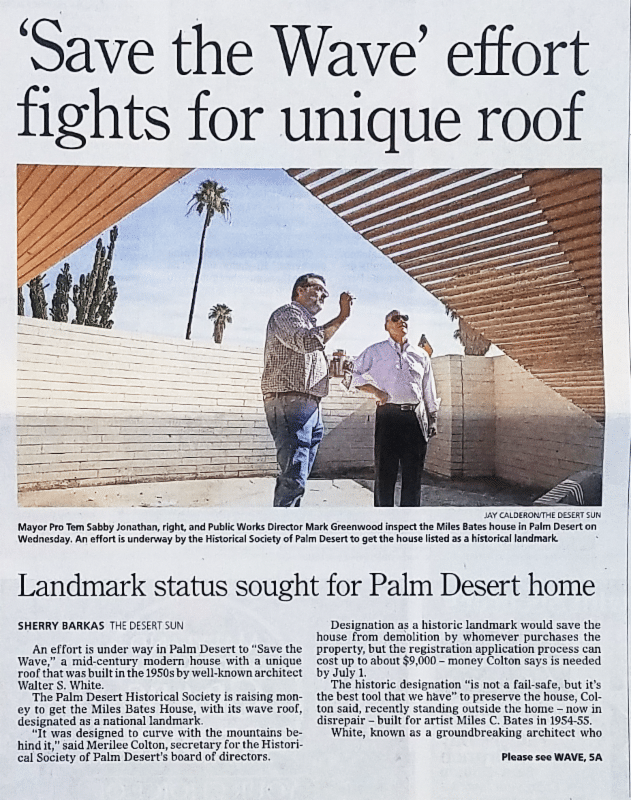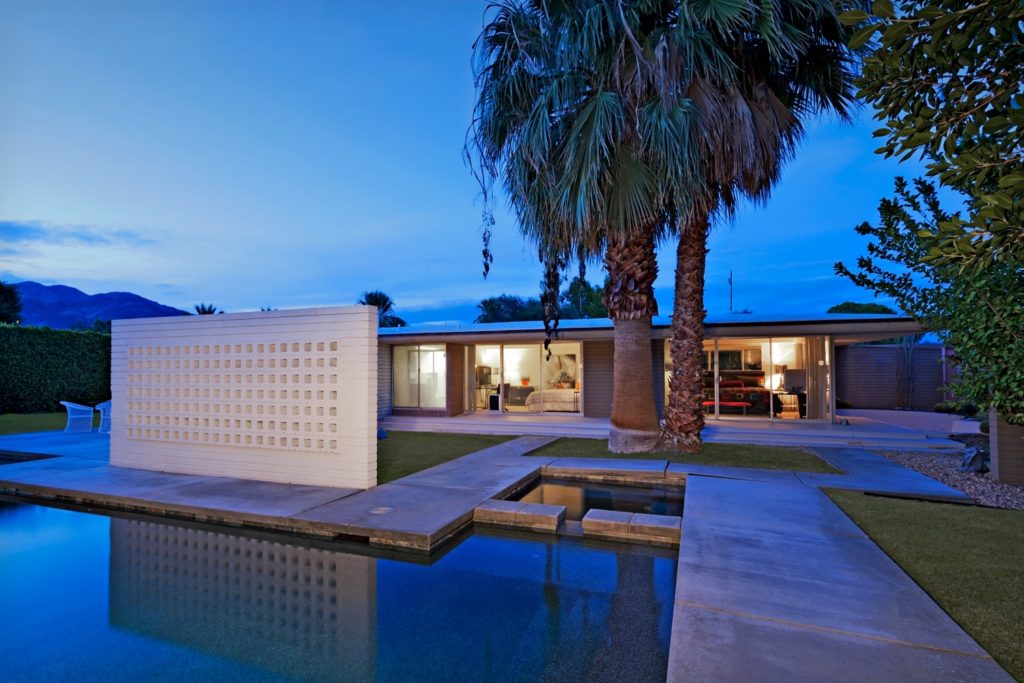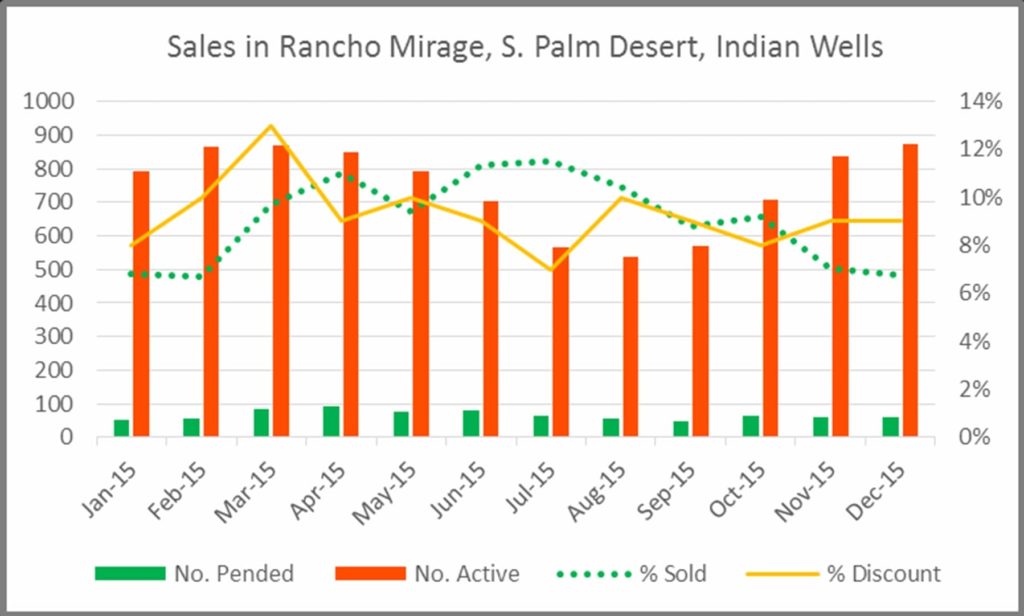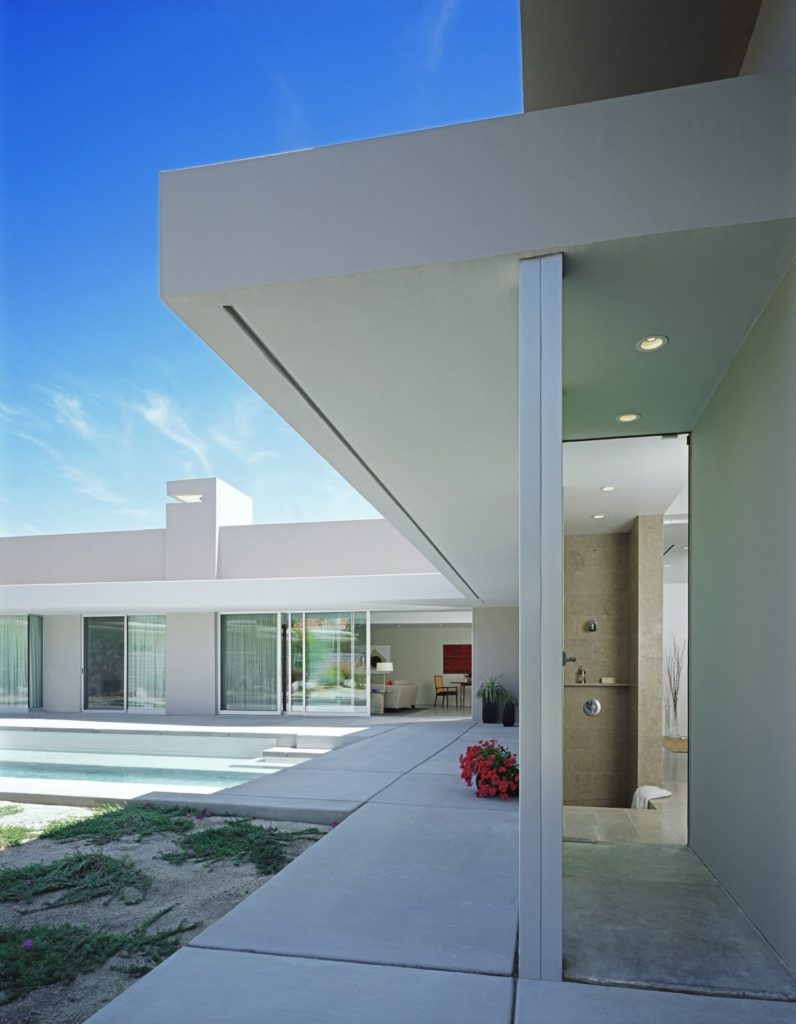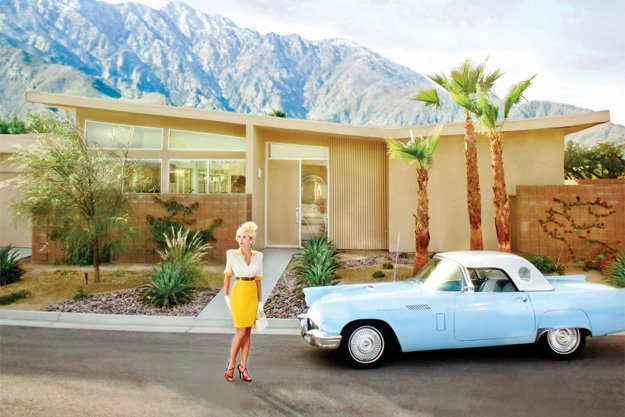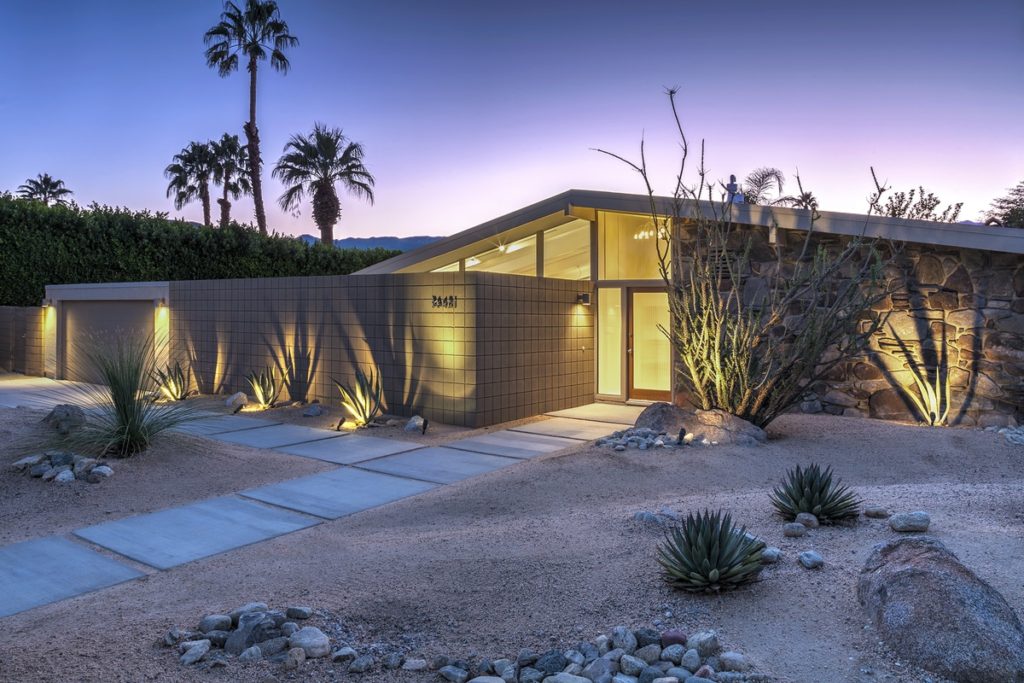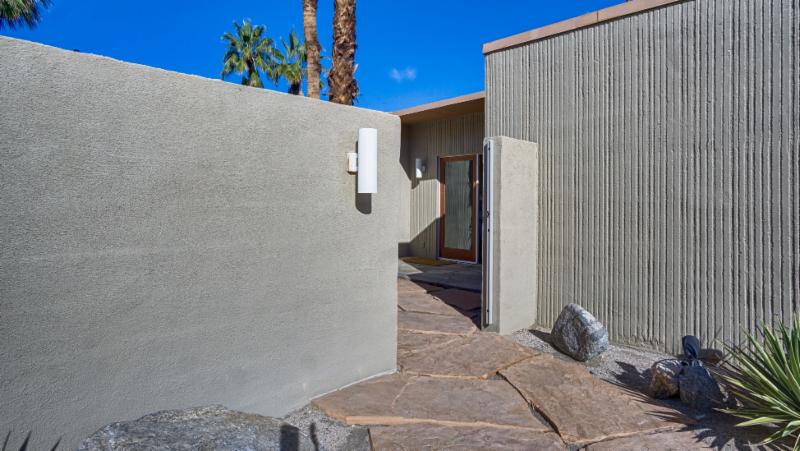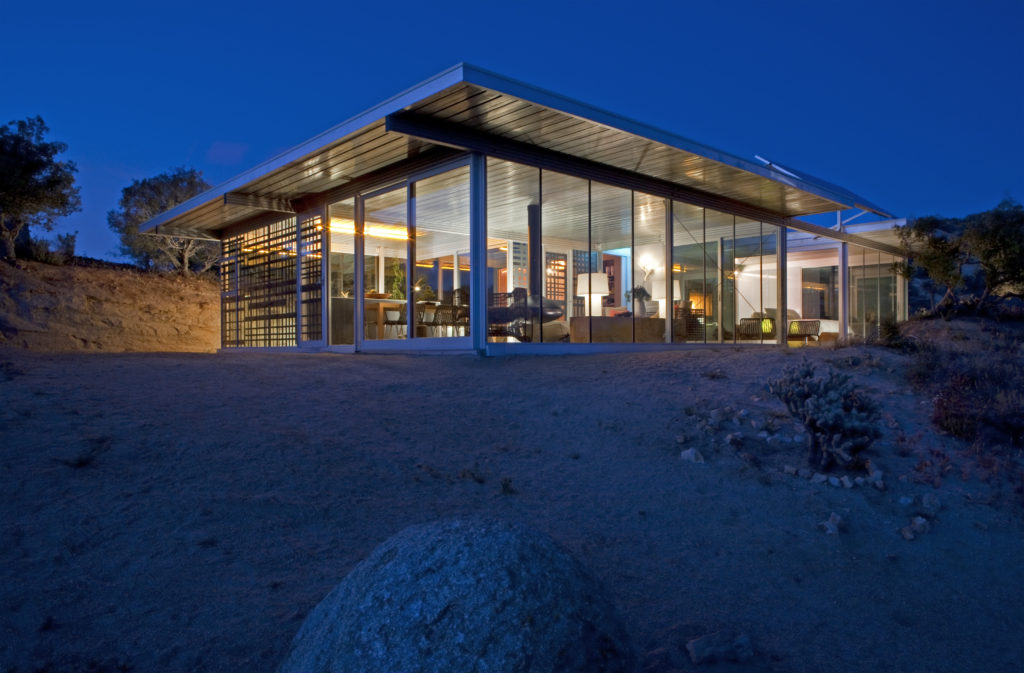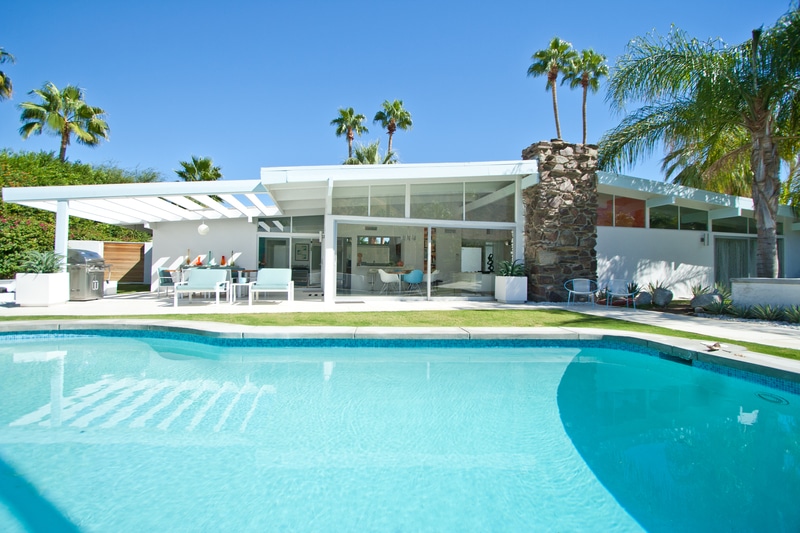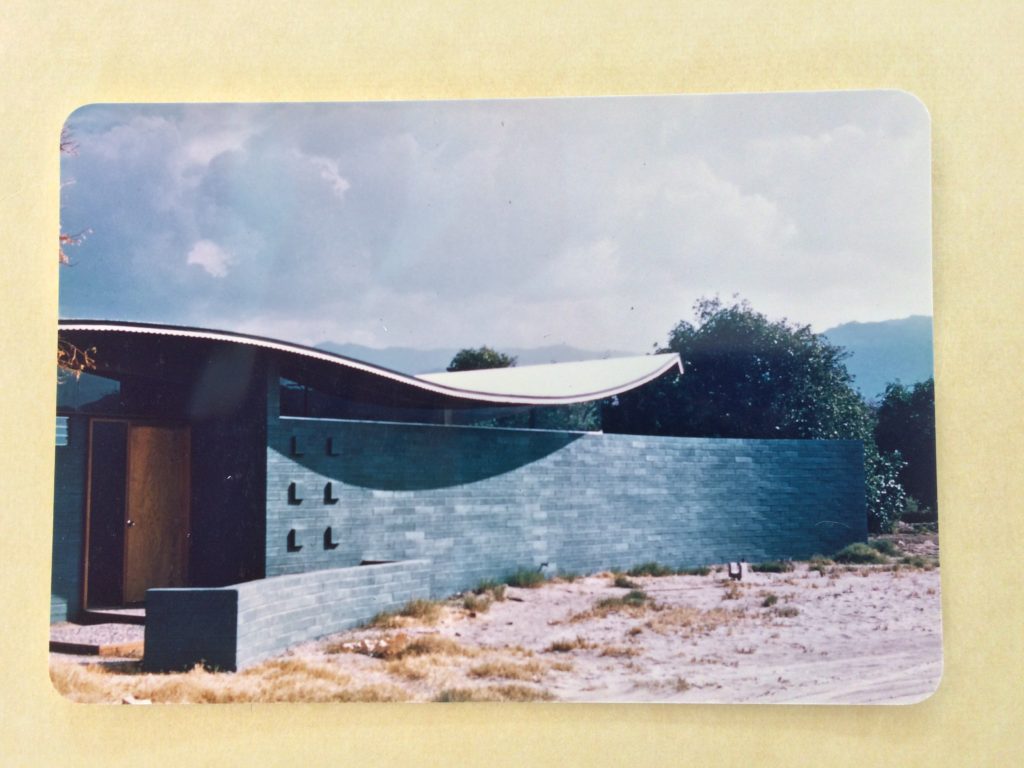
Miles C. Bates house, Palm Desert, CA, 1954-5.
Images courtesy of Architecture and Design Collection, Art, Design & Architecture Museum, UC Santa Barbara.
© UC Regents.
The Desert Sun earlier this month reported a decision by City Council, on advice of City Staff, to formally object to the Historical Society of Palm Desert (HSPD) submission for the nomination of the Miles C. Bates House to the National Register of Historic Places. The general concern was that the City would lose statutory control of the property to the federal designation.
A specific concern was heard that a national designation would tie the hands of the City should a future owner decide the structure prevented the land’s highest and best use, and wish it demolished. This is not the case. According to 36CFR1.60.2, “Listing of private property on the National Register does not prohibit under Federal law or regulation any actions which may otherwise be taken by the property owner with respect to the property.” If it is an income producing property that has received federal tax preservation incentives, other rules apply. Continue reading “The Miles C. Bates House – The Fog of War?”
